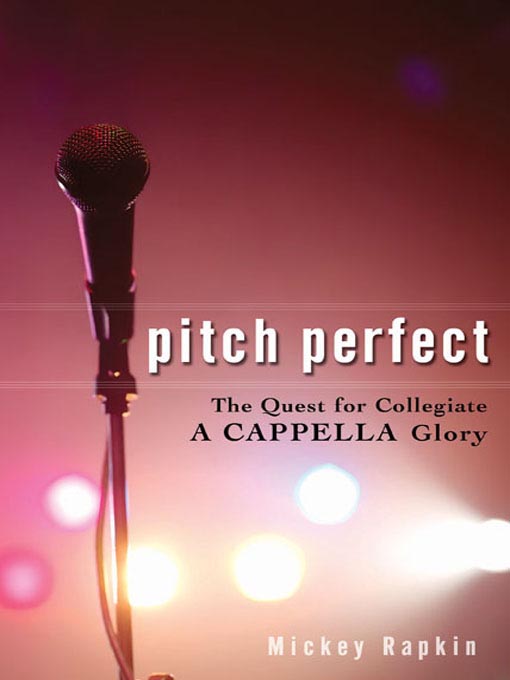
Pitch Perfect
The Quest for Collegiate A Cappella Glory
کتاب های مرتبط
- اطلاعات
- نقد و بررسی
- دیدگاه کاربران
نقد و بررسی

April 21, 2008
According to GQ
senior editor Rapkin, today’s lively collegiate a cappella groups boast hip-hop repertory, professional vocal arrangements, competitions at Lincoln Center and a world shrunk by the Internet. During the 2006–2007 college season, Rapkin, an alum of a Cornell all-male singing club, followed three a cappella powerhouses: Divisi, an all-girl group from the University of Oregon, the testosterone-driven Hullabahoos of the University of Virginia, and Beelzebubs, from Tufts. Each is a collective with a score to settle, a tradition to honor. Robbed of a championship in 2005, Divisi wants payback; the Hullabahoos want respect without forfeiting their frat-boy charm; and the controversial Bubs want to hone their edge. Throughout, Rapkin engages with celebrity trivia (Heroes
’ Masi Oka sang a cappella at Brown) and music criticism. He profiles the cottage recording industry built from college a cappella. Most notably, he riffs through signature events and crisis moments with a snarky humor (onstage Divisi looks like “the women in that Robert Palmer video”) that turns each chapter into a picaresque progression toward graduation.

May 15, 2008
Rapkin's (senior editor, "GQ") breezy and gossipy chronicle of the collegiate a cappella scene is unique. Except for some commemorative publications (such as those concerning the original and best-known group, the Yale Whiffenpoofs), little has been published in book form on the collegiate a cappella phenomenon. Primarily, this is because the current scene is newwith arrangements of pop music (rather than a concentration on traditional favorites), the rising importance of competitions, and a veritable explosion of groups in the past 25 years. Rapkin examines the recent history of three top ensemblesOregon's Divisi, Virginia's Hullabahoos, and Tufts's Beelzebubsand tells a fascinating story of top-flight recording opportunities, gigs paying up to $13,000, fame as far away as the Philippines, and an appearance on Letterman. The heart of the book consists of the personal stories of the men and women who organize and perform in these groups, though Rapkin also manages to explain much of the recent history of collegiate a cappella groups along the way. Recommended for all libraries.Bruce R. Schueneman, Texas A&M Univ. Lib., Kingsville
Copyright 2008 Library Journal, LLC Used with permission.

June 1, 2008
Designating unaccompanied singing, a cappella literally means "like the chapel," appropriately since the form, Rapkin says, began with Gregorian chant. In the prologue, Rapkin cheerfully clambers through a cappellas roots and varied branches, from shape-note singing and call-and-response singing to barbershop and the folk-pop hit "The Lion Sleeps Tonight" and gospel classics by the Soul Stirrers with Sam Cooke. Yet a cappella has come fully to life on college campuses. While the phenomenons "gold standard" remains the Whiffenpoofs, founded in 1909 at Yale, there are now more than 1,200 collegiate a cappella groups in the U.S. A cappella is the opposite of cool, Rapkin concedes, yet such now-famous folk as Diane Sawyer, Art Garfunkel, and Osama bin Laden (!) once sang in a cappella groups. The bulk of the book examines three current groups--the University of Oregons all-female Divisi, the Tufts Beelzebubs of Tufts University, and the University of Virginias Hullabahoos--as they compete against one another in a scenario that makes American Idol look rather tame. A fascinating, behind-the-scenes look at an underappreciated musical subculture.(Reprinted with permission of Booklist, copyright 2008, American Library Association.)

























دیدگاه کاربران